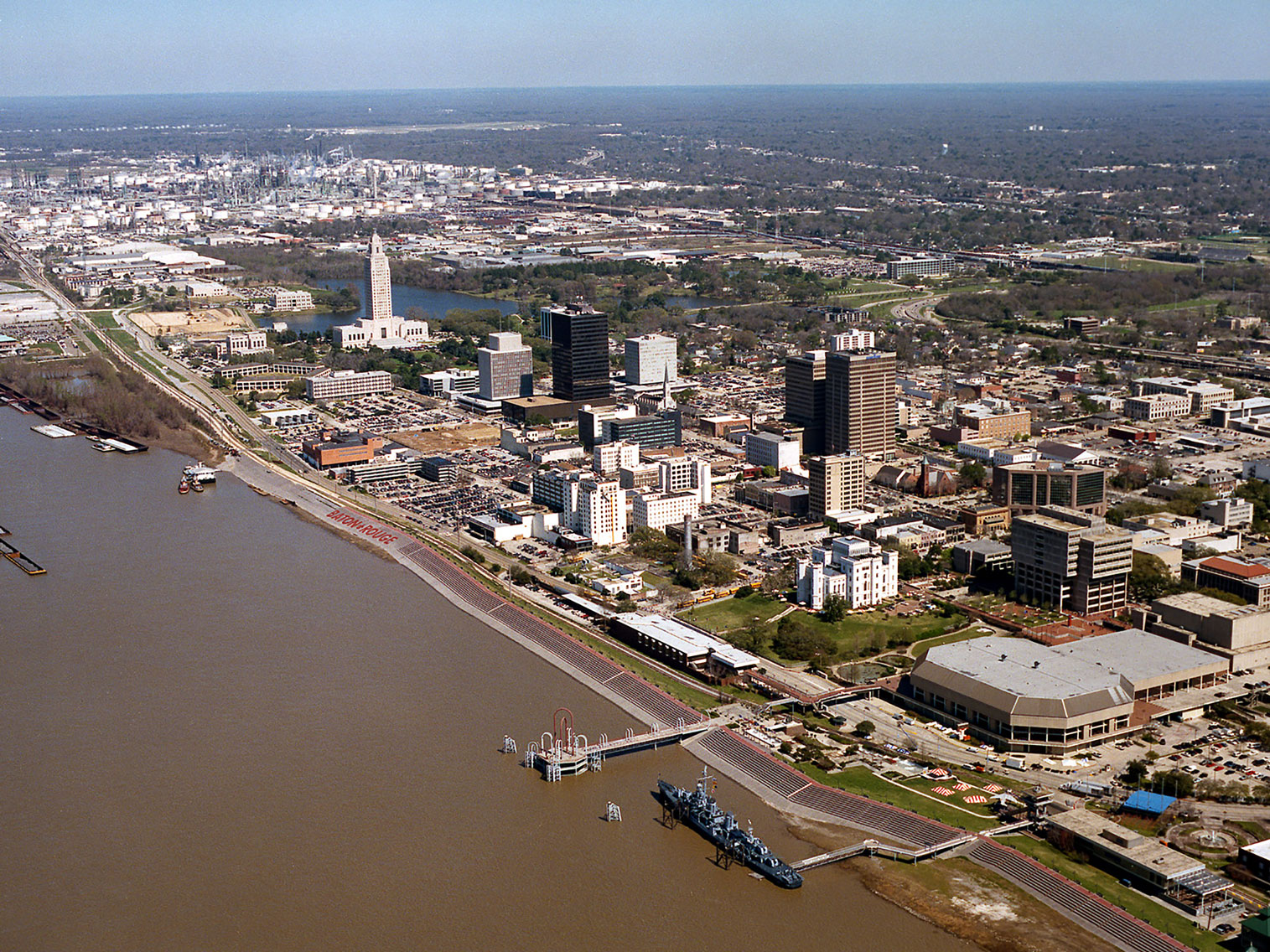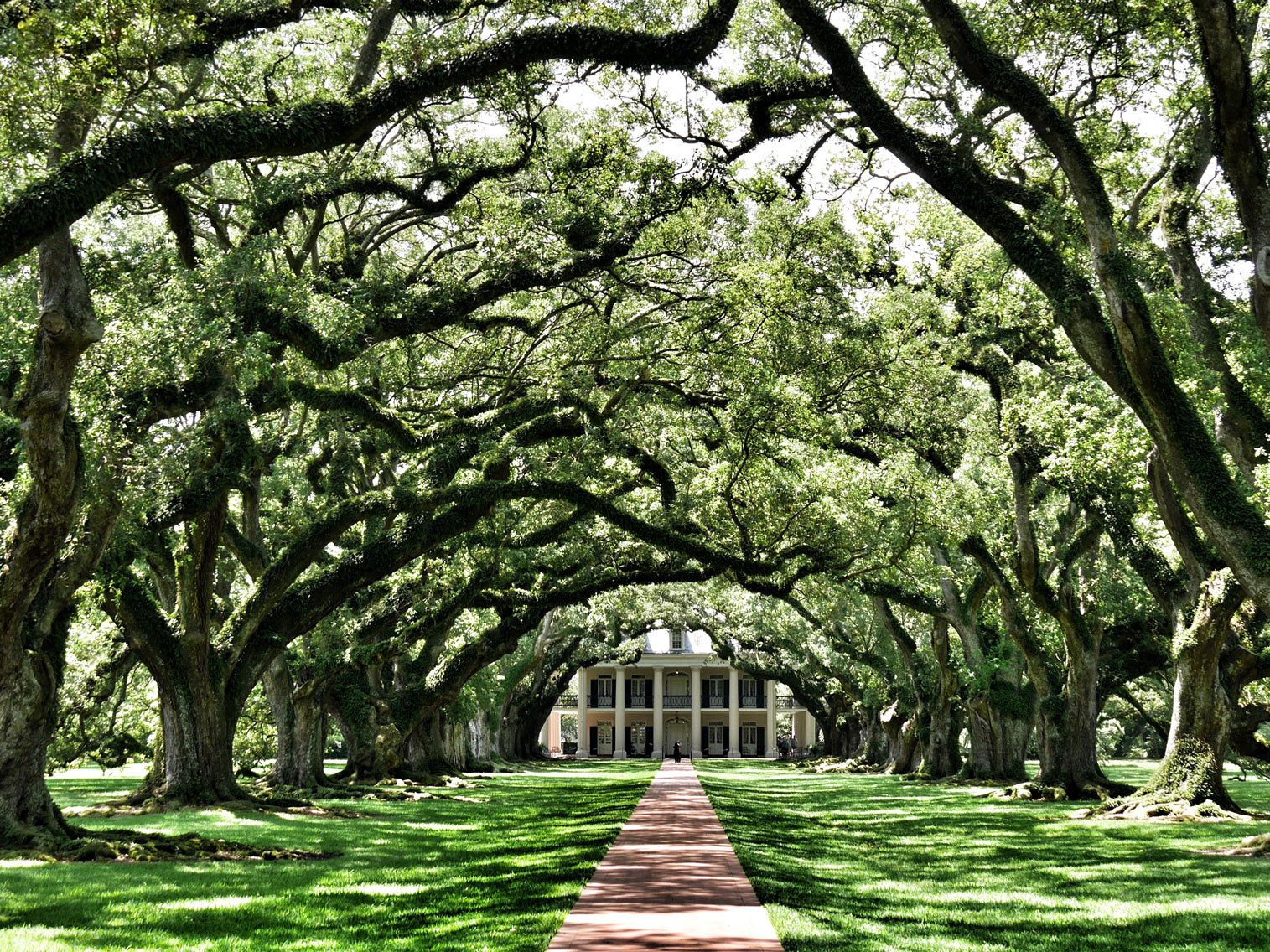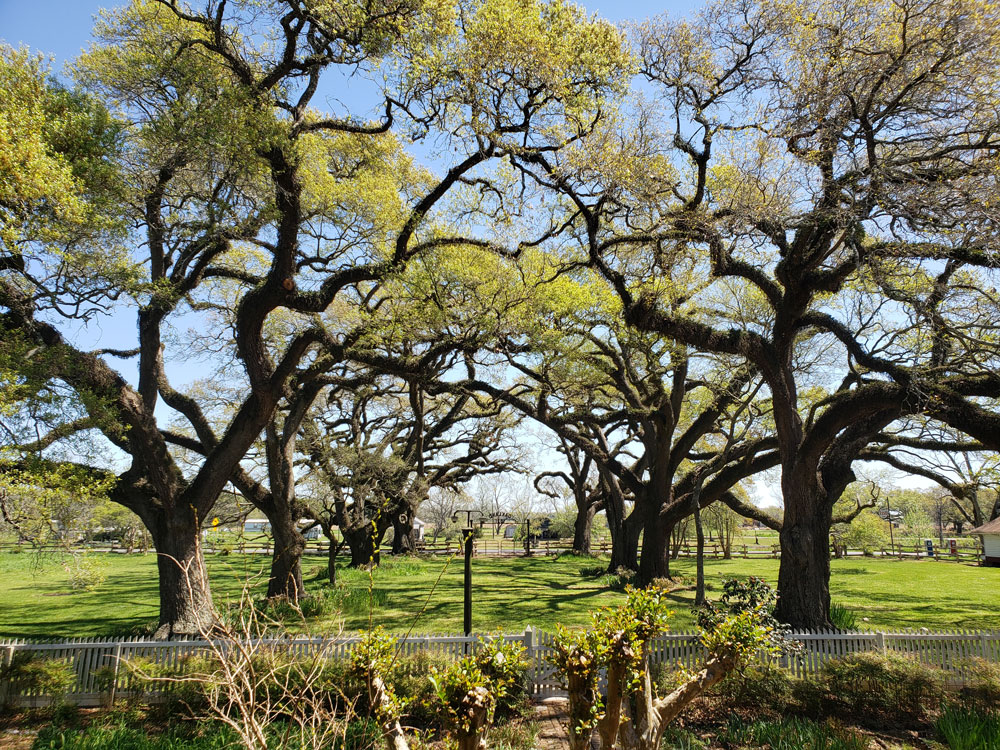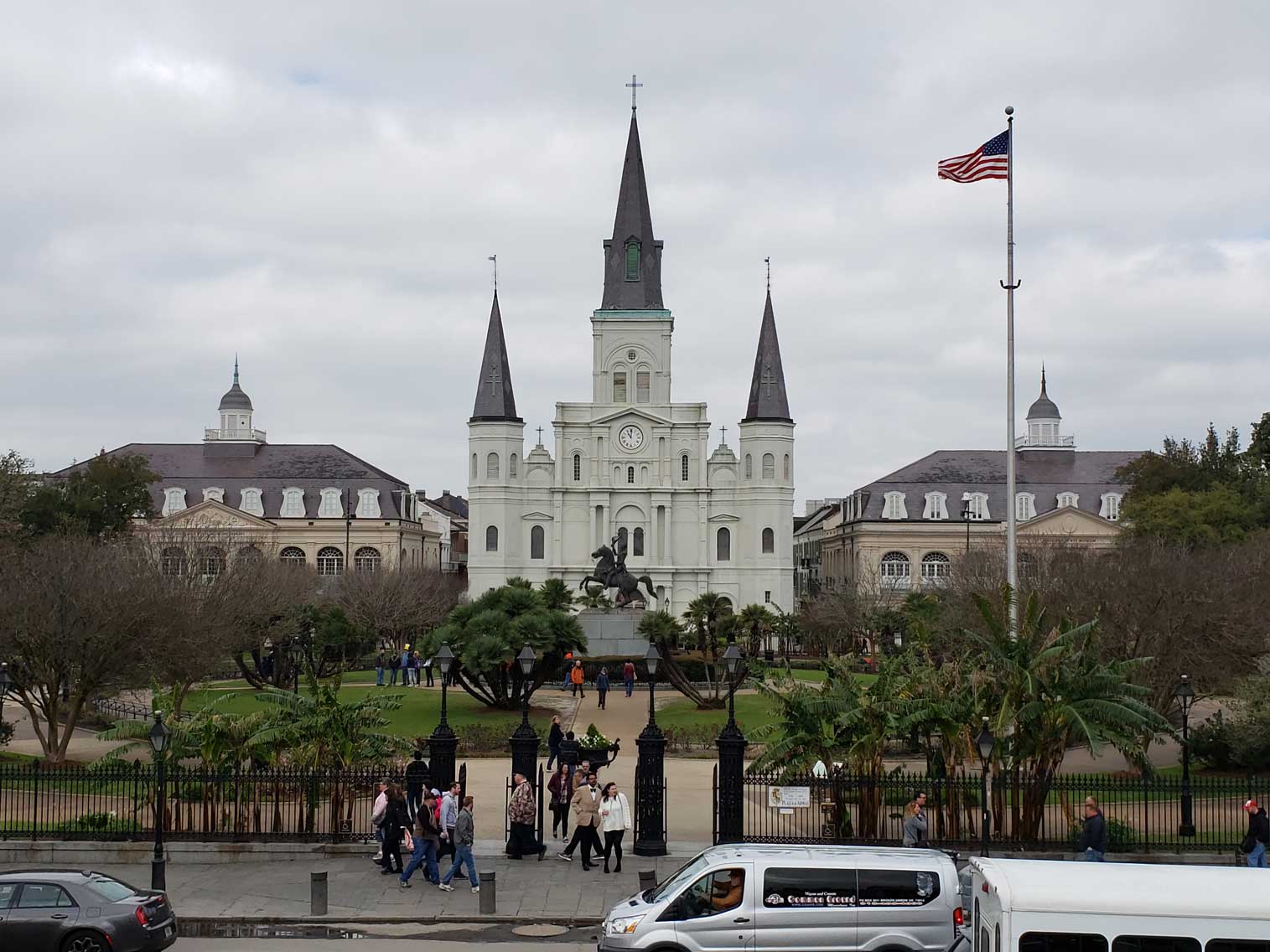Louisiana Travel Guide
State in the Deep South and South Central regions of the United States with the state's capital of Baton Rouge, and its largest city New Orleans where much of the state's lands were formed from sediment washed down the Mississippi River, leaving enormous deltas and vast areas of coastal marsh and swamp
Louisiana Map
Places to See in Louisiana

Michael Maples, U.S. Army Corps of Engineers, Public domain, via Wikimedia Commons; Image Size Adjusted
Baton Rouge, LA
Capital city of Louisiana on the eastern bank of the Mississippi River, and second-largest city in Louisiana after New Orleans and is the middle ground of South Louisiana cultures, having a mix of Cajun and Creole
Cane River Creole National Historical Park
National park preserving Creole plantation life with restored buildings, exhibits & ranger tours
New Orleans
City located along the Mississippi River in the southeastern region of Louisiana is the most populous city in Louisiana and is world-renowned for its distinctive music, Creole cuisine, unique dialects, and its annual celebrations and festivals, most notably Mardi Gras

Photo by Dirk Spijkers on Unsplash; Image Size Adjusted
Oak Alley Plantation
Property designated a National Historic Landmark for its architecture and landscaping, and for the agricultural innovation of grafting pecan trees, performed there in 1846-47
Louisiana is in the Deep South and South Central regions of the United States. Louisiana is the only U.S. state with political subdivisions termed parishes, which are equivalent to counties, making it one of only two U.S. states not subdivided into counties (the other being Alaska). The state's capital is Baton Rouge, and its largest city is New Orleans.
Much of the state's lands were formed from sediment washed down the Mississippi River, leaving enormous deltas and vast areas of coastal marsh and swamp. These contain a rich southern biota; typical examples include birds such as ibises and egrets. There are also many species of tree frogs, and fish such as sturgeon and paddlefish. In more elevated areas, fire is a natural process in the landscape and has produced extensive areas of longleaf pine forest and wet savannas. These support an exceptionally large number of plant species, including many species of terrestrial orchids and carnivorous plants. Louisiana has more Native American tribes than any other southern state, including four that are federally recognized, ten that are state recognized, and four that have not received recognition.
Some Louisiana urban environments have a multicultural, multilingual heritage, being so strongly influenced by a mixture of 18th-century French, Haitian, Spanish, French Canadian, Native American, and African cultures that they are considered to be exceptional in the U.S. Before the American purchase of the territory in 1803, the present-day U.S. state of Louisiana had been both a French colony and for a brief period a Spanish one. In addition, colonists imported numerous African people as slaves in the 18th century. Many came from peoples of the same region of West Africa, thus concentrating their culture. There has never been an official language in Louisiana, and the state constitution enumerates "the right of the people to preserve, foster, and promote their respective historic, linguistic, and cultural origins".
Louisiana was named after Louis XIV, King of France from 1643 to 1715. When René-Robert Cavelier, Sieur de La Salle claimed the territory drained by the Mississippi River for France, he named it La Louisiane. The suffix -ana (or -ane) is a Latin suffix that can refer to "information relating to a particular individual, subject, or place". Thus, roughly, Louis + ana carries the idea of "related to Louis". Once part of the French Colonial Empire, the Louisiana Territory stretched from present-day Mobile Bay to just north of the present-day Canada-United States border, including a small part of what are now the Canadian provinces of Alberta and Saskatchewan.
The state may properly be divided into two parts, the uplands of the north (the region of North Louisiana), and the alluvial along the coast (the Central Louisiana, Acadiana, Florida Parishes, and Greater New Orleans regions). The alluvial region includes low swamp lands, coastal marshlands and beaches, and barrier islands that cover about 20,000 square miles (52,000 km2). This area lies principally along the Gulf of Mexico and the Mississippi River, which traverses the state from north to south for a distance of about 600 mi (970 km) and empties into the Gulf of Mexico; also in the state are the Red River; the Ouachita River> and its branches; and other minor streams (some of which are called bayous).
The higher and contiguous hill lands of the north and northwestern part of the state have an area of more than 25,000 square miles (65,000 km2). They consist of prairie and woodlands. The elevations above sea level range from 10 feet (3 m) at the coast and swamp lands to 50-60 feet (15-18 m) at the prairie and alluvial lands. In the uplands and hills, the elevations rise to Driskill Mountain, the highest point in the state only 535 feet (163 m) above sea level.
August 29, 2005, Katrina (Category 3 at landfall) struck and devastated southeastern Louisiana, where it breached and undermined levees in New Orleans, causing 80% of the city to flood. Most people had been evacuated, but the majority of the population became homeless. The city was virtually closed until October. It is estimated that more than two million people in the Gulf region were displaced by the hurricane and that more than 1,500 fatalities resulted in Louisiana alone. Louisiana residents relocated across the country for temporary housing, and many have not returned.
Historic or scenic areas managed, protected, or otherwise recognized by the National Park Service include:
- Atchafalaya National Heritage Area in Ascension Parish
- Cane River National Heritage Area near Natchitoches
- Cane River Creole National Historical Park near Natchitoches
- Jean Lafitte National Historical Park and Preserve, headquartered in New Orleans, with units in St. Bernard Parish, Barataria (Crown Point), and Acadiana (Lafayette)
- Poverty Point National Monument at Delhi, Louisiana
- Saline Bayou, a designated National Wild and Scenic River near Winn Parish in northern Louisiana.
Louisiana operates a system of 22 state parks, 17 state historic sites and one state preservation area.
Louisiana has 955,973 acres, in four ecoregions under the wildlife management of the Louisiana Department of Wildlife and Fisheries. The nature conservancy also owns and manages a set of natural areas.
The majority of urban Louisianians live along the coast or in northern Louisiana. The oldest permanent settlement in the state is Nachitoches. Baton Rouge, the state capital, is the second-largest city in the state. The most populous city is New Orleans. Louisiana is the second-most populous of the South Central United States after Texas. The majority of the state's growing population lives in southern Louisiana, spread throughout Greater New Orleans, the Florida Parishes, and Acadiana.
Louisiana is home to many diverse cultures, especially notable are the distinct culture of the Louisiana Creoles, descendants of French settlers in colonial Louisiana
At the turn of the 18th century and in the early 1800s, New Orleans received a major influx of white and mixed-race refugees fleeing the violence of the Haitian Revolution, many of whom brought their slaves with them. This added another infusion of African culture to the city, as more slaves in Saint-Domingue were from Africa than in the United States. They strongly influenced the African-American culture of the city in terms of dance, music and religious practices.
Creole culture is an amalgamation of French, African, Spanish (and other European), and Native American cultures. Creole comes from the Portuguese word crioulo; originally it referred to a colonist of European (specifically French) descent who was born in the New World, in comparison to immigrants from France. The oldest Louisiana manuscript to use the word "Creole", from 1782, applied it to a slave born in the French colony. But originally it referred more generally to the French colonists born in Louisiana.
Over time, there developed in the French colony a relatively large group of Creoles of Color (gens de couleur libres), who were primarily descended from African slave women and French men (later other Europeans became part of the mix, as well as some Native Americans.) Often the French would free their concubines and mixed-race children, and pass on social capital to them. They might educate sons in France, for instance, and help them enter the French Army for a career. They also settled capital or property on their mistresses and children. The free people of color gained more rights in the colony and sometimes education; they generally spoke French and were Roman Catholic. Many became artisans and property owners. Over time, the term "Creole" became associated with this class of Creoles of Color, many of whom achieved freedom long before the Civil War.
Wealthy French Creoles generally maintained town houses in New Orleans as well as houses on their large sugar plantations outside town along the Mississippi River. New Orleans had the largest population of free people of color in the region; they could find work there and created their own culture, marrying among themselves for decades.
The ancestors of Cajuns immigrated mostly from west central France to New France, where they settled in the Atlantic provinces of New Brunswick, Nova Scotia and Prince Edward Island, known originally as the French colony of Acadia. After the British defeated France in the French and Indian War (Seven Years' War) in 1763, France ceded its territory east of the Mississippi River to Britain. After the Acadians refused to swear an oath of loyalty to the British Crown, they were expelled from Acadia, and made their way to places such as France, Britain, and New England.
Other Acadians covertly remained in British North America or moved to New Spain. Many Acadians settled in southern Louisiana in the region around Lafayette and the LaFourche Bayou country. They developed a distinct rural culture there, different from the French Creole colonists of New Orleans. Intermarrying with others in the area, they developed what was called Cajun music, cuisine and culture.
Colonial French was the dominant language of white settlers in Louisiana during the French colonial period; it was spoken primarily by the French Creoles (native-born). In addition to this dialect, the mixed-race people and slaves developed Louisiana Creole, with a base in West African languages. The limited years of Spanish rule at the end of the 18th century did not result in widespread adoption of the Spanish language. French and Louisiana Creole are still used in modern-day Louisiana, often in family gatherings. English and its associated dialects became predominant after the Louisiana Purchase of 1803, after which the area became dominated by numerous English speakers. In some regions, English was influenced by French, as seen with Louisiana English. Colonial French, although mistakenly named Cajun French by some Cajuns, has persisted alongside English.
Louisiana has two major professional sports league franchises: the National Basketball Association's New Orleans Pelicans and the National Football League's New Orleans Saints.
This article uses material from the Wikipedia articles "Louisiana", which are released under the Creative Commons Attribution-Share-Alike License 3.0

